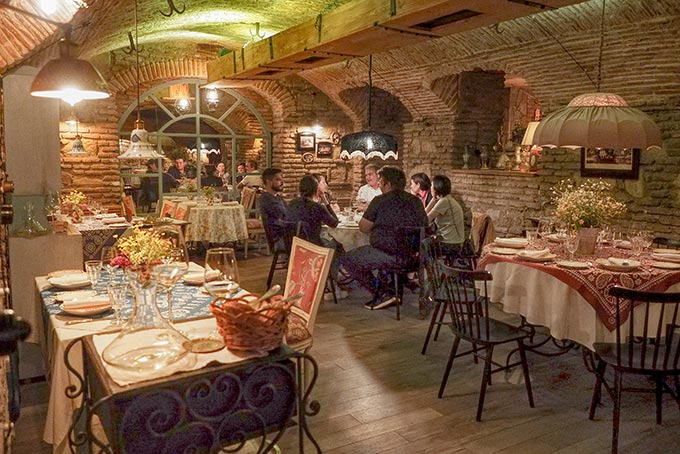It happens to me a lot. I arrive in a new place with no plans and little knowledge of the country. I do this purposely. I want to see every country I visit with no expectations. I prefer to be surprised. Somehow, the universe always seems to lead me to the places I need to experience, and Tbilisi,
Georgia, was no different.
I arrived in the capital city after an 11-hour night train from Baku, Azerbaijan. After checking into my hotel, I got local currency from an ATM, then focused on my most immediate need – food. There are numerous restaurants in Tbilisi for Georgian cuisine, but I was tired and didn’t want to go far. Fortunately, I spied a few tables on the sidewalk just a block away from my hotel. It was Restaurant Barbarestan, one of the most popular places in town that offers a pure Georgian menu. I stepped down into the sunken restaurant timidly, expecting to find only meat items on the menu. To my surprise, I was assured the selections included several vegetarian and vegan items.
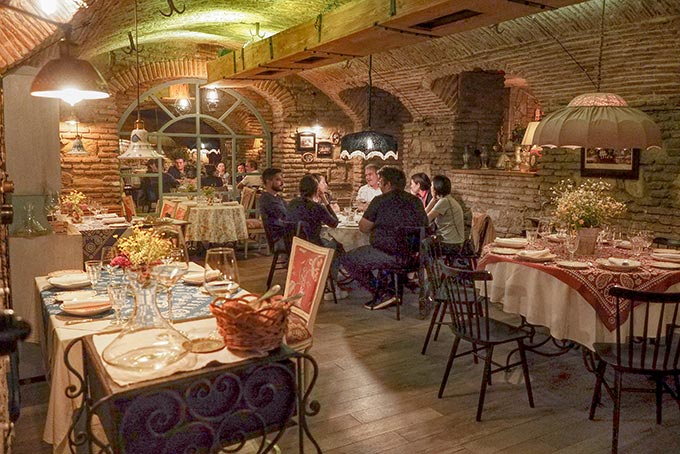
The Kurasbediani family had been operating a restaurant on this spot in Tbilisi since 2001. Their food, while good, did nothing to differentiate them from scores of other restaurants offering modern Georgian food. Four years ago, they decided a change was in order. With the country of Georgia becoming better known in tourism circles, the patriarch of the family, Zviadi Kurasbediani, proposed a total restoration of the restaurant decor and a shift to a menu that featured Georgian cuisine as it would have been prepared in the 19th century.
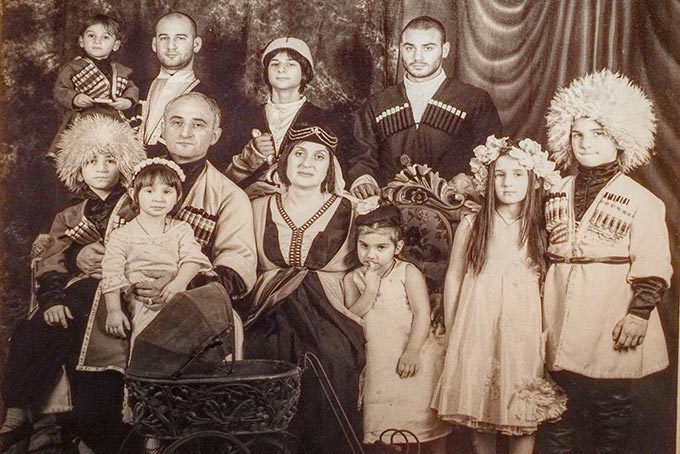

The restoration was well underway when the family realized the menu was going to be a problem. For nine months they had searched for historical Georgian recipe books but couldn’t find any. Though I could find no confirmation of this (and one of my readers claims it it false), the manager told me that the libraries in Georgia had been burned down in 1935 and all the historic recipe books had been consumed by the flames. As anxiety about about the menu was reaching fever pitch, Zviadi wandered into an area of the city known as the Dry Bridge. Older residents gather here each week, selling artifacts and antiques from the Soviet era. Searching for items to decorate the dining room, he flipped open what looked like a carved wooden jewelry chest. Inside was a book from 1874, written by Barbare Jorjadze, the first Georgian feminist and the first woman to create a culinary cookbook in Georgia. It’s fragile parchment pages held 807 recipes, which Barbare had collected from around the Caucasus.
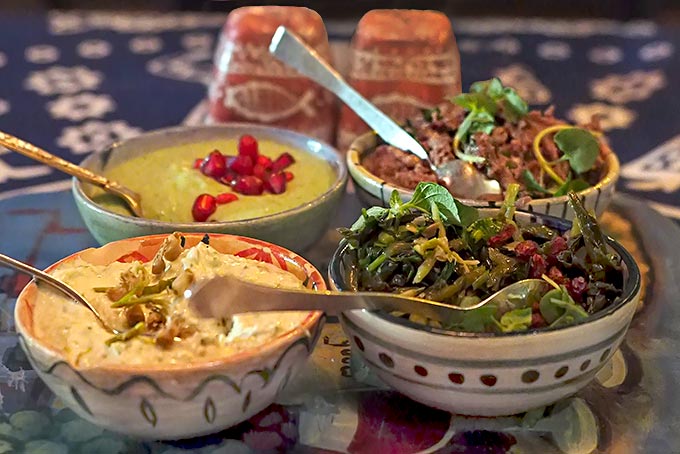
Using only fresh, local, seasonal ingredients, the chefs have recreated 200 of the historic recipes found in the book. While modern Georgian cuisine focuses heavily on meat, the availability of vegetarian and vegan selections on Barbarestan’s menu is likely attributable to the fact that people living in the 19th century were too poor to afford meat. Several of my selections had a delightfully peasant feel and taste. The Chickpeas Gufta, for example, featured grape leaf purses stuffed with a purée of forest beans, floating on a base of beans and braised onions in a spicy tomato sauce. It was perfection. My appetizer featured four small ceramic bowls containing pickled bladdernut plants with walnuts, a purée of wild garlic with pumpkin, caramelized onions, and Nadugi with tarragon, all served with a delicate lavash crackers and homemade garlic butter.
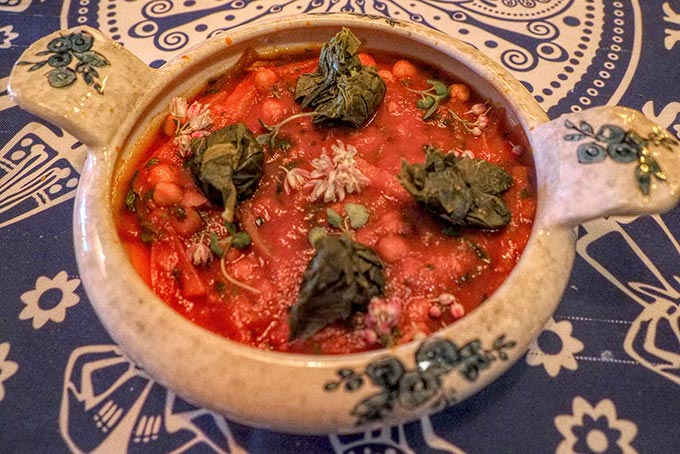
I was pleasantly full by the time I’d finished my starter and main dish, but I asked for a second Americano. It was delivered with a dessert, the Almond Rose Meringue, compliments of the chef. It was almost too pretty to dig into. Almost. I pushed my fork through the high meringue cap to the layer of mascarpone and down to the bed of raspberry sauce. The meringue cap broke in half to reveal a hot pink interior, redolent with the fragrance of rose water. It was equally delicate and hearty, and sinfully good!
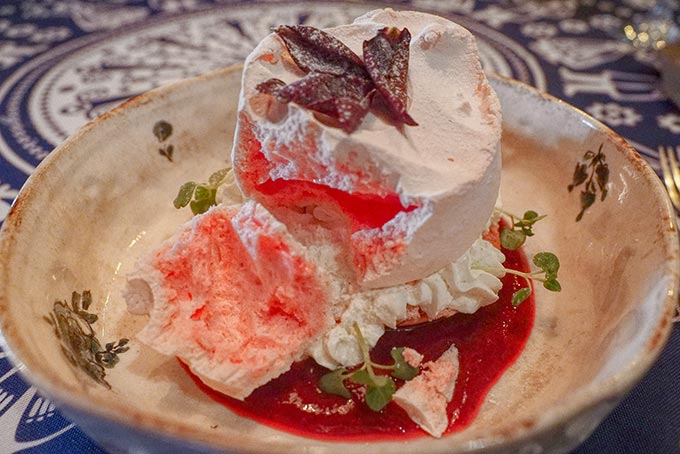
Since opening in December of 2015, Barbarestan has become one of the highest rated eating establishments in Tbilisi. They are so popular that the family has continued to add more space each year. Last year they took over the cellar of the building to add another public dining room, two private dining rooms, and an extensive wine cellar that exclusively stocks Georgia’s famous wines. Built in 1863, the cellar was formerly occupied by a butcher. As always, the Kurasbedianis restored the space with an eye to preserving history. They left the old brick walls and arches, and even the metal hooks in the ceiling where slabs of meat once hung.
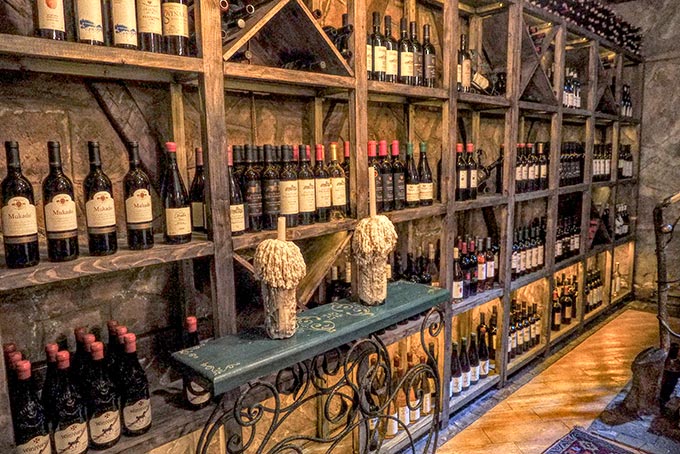
Even with the added space, the restaurant is sold out most nights. I was lucky. I arrived around 1 p.m., after the lunch rush and before the dinner crowd had descended. But if you don’t want to miss out on one of the culinary highlights of Tbilisi, I highly recommend you make reservations. You can contact the restaurant on their Facebook Page. Expand any of the posts to see them in English.
